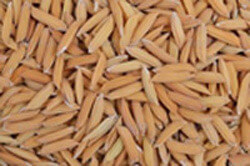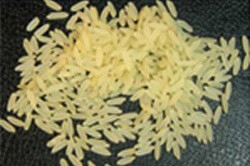Parboiled rice (from the English words partially boiled) is a kind of rice that has undergone a special treatment allowing to increase the rice content of microelements (vitamins and mineral salts), this process is scientifically called as hydrothermal process that may be defined as the gelatinization of starch within the rice grain. It has almost the same nutritional value as brown rice It will be enabling to achieve a better final cooking behaviour.
More than 1000 years ago Parboiling was done in simple clay pots in the earth to improve shelf life and resistance against insects. A first big boost to Parboiling production was given during World War II when the need to supply the troops with long term storage and high nutritional level foodstuff was imperative. Nowadays Parboiled rice is by far one of the most popular rice products in the world. Over the past few years’ people consume Parboiled rice in countries like U.S.A, Europe, and Nigeria and Asian countries.
The different process solutions the grains undergo, allow the millers to select specific process parameters to match different production requirements. It is therefore important to know what impact the different kinds of processes will have on different Paddy varieties and on the quality of the final product.
Another positive effect of parboiling is that rice turns out to be far more resistant to pest infestation since the steaming process sterilizes the grains so that they can be preserved longer. Parboiled rice satisfies even the most demanding consumer expecting perfect rice even in case of overcooking.
Through the lower release of starch in cooking stage, Parboiled grains do not stick together, are well separated and can be reheated without loosing their original characteristics. For these reasons Parboiled rice has met over the years an increasing success among consumers and it is by now among the simplest and versatile products the modern food industry might offer.


